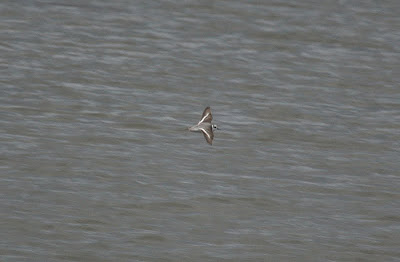The Black Grouse can exclusively reveal the reason for the latest hold-up in the reconstruction of the long awaited replacement hide at the Point of Ayr.
The current delay is said to be due to the relevant authorities having to conduct an ‘impact assessment’, but this blog understands the real reason for the delay is due to concerns the RSPB raised when it was discovered that the new structure would be pointed directly towards Mecca. The organisation has also gone as far as producing an artist's impression (pictured above) of what the potential chaos may look like.
Said RSPB spokesperson Fatimah Niqab:
“When we found out that the new hide was facing that most holy of sites to our Islamic brothers, we were concerned that it would turn into a ‘de facto’ place of worship or a ‘Mosque’ as we tend to call them.”
The Memsahib went on to say:
“We were obviously worried that it would develop into a place of pilgrimage and that the subsequent increase in visitors would overwhelm the current parking facilities.”
Fears have also been raised by regular holidaymakers to the local static caravan concentration camps at nearby Talacre.
One shaven headed and tattooed wag commented:
“Before you know it there will be a Minaret, with a Muezzin blaring out the call to prayer every five minutes. How do you expect me to sleep off my twenty pints of Stella with that Hullabaloo?”
Until later – unless I am the subject of a Fatwa.
The current delay is said to be due to the relevant authorities having to conduct an ‘impact assessment’, but this blog understands the real reason for the delay is due to concerns the RSPB raised when it was discovered that the new structure would be pointed directly towards Mecca. The organisation has also gone as far as producing an artist's impression (pictured above) of what the potential chaos may look like.
Said RSPB spokesperson Fatimah Niqab:
“When we found out that the new hide was facing that most holy of sites to our Islamic brothers, we were concerned that it would turn into a ‘de facto’ place of worship or a ‘Mosque’ as we tend to call them.”
The Memsahib went on to say:
“We were obviously worried that it would develop into a place of pilgrimage and that the subsequent increase in visitors would overwhelm the current parking facilities.”
Fears have also been raised by regular holidaymakers to the local static caravan concentration camps at nearby Talacre.
One shaven headed and tattooed wag commented:
“Before you know it there will be a Minaret, with a Muezzin blaring out the call to prayer every five minutes. How do you expect me to sleep off my twenty pints of Stella with that Hullabaloo?”
Until later – unless I am the subject of a Fatwa.















